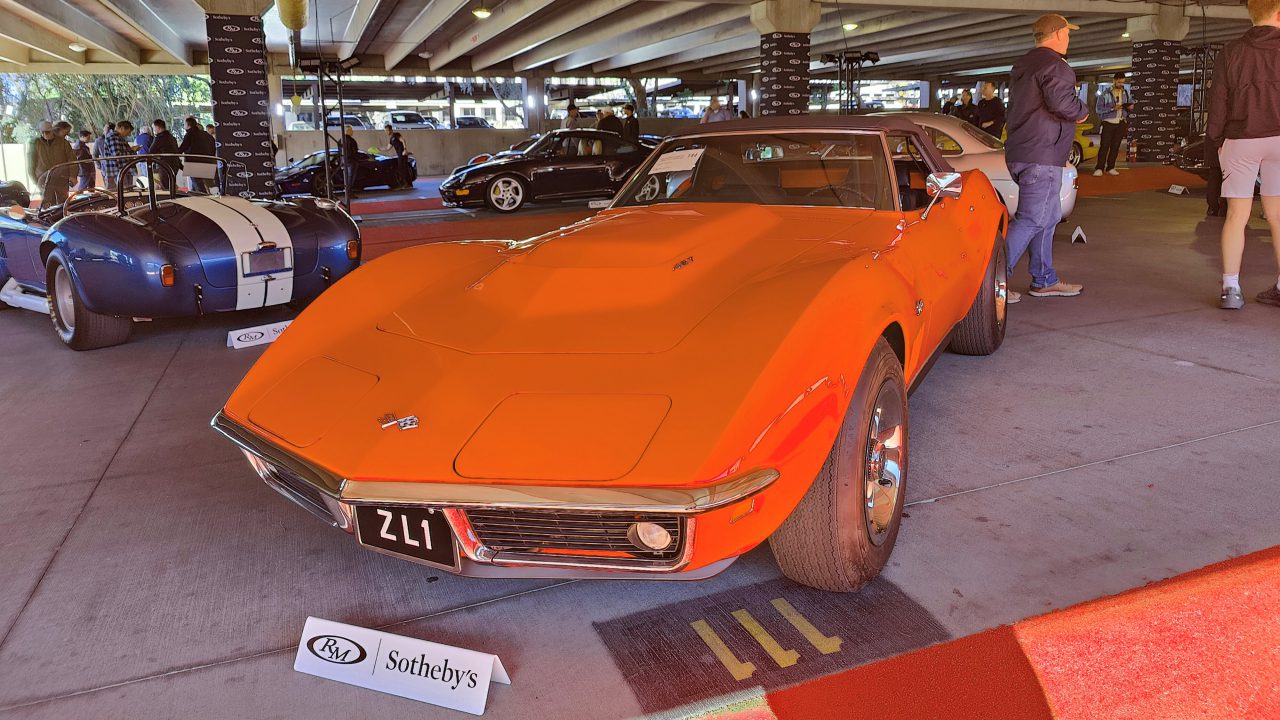Our writer Andy Reid is driving a Lucid Air for his time in Arizona for auction week, you can follow the third part of his journey here.
It’s day 4 driving the Lucid Air at Arizona Auction week and the day started with driving over to the RM Sotheby’s auction for the final few hours of the pre-auction preview.
After a few hours of spending time with friends and looking at a few cars, it was time for my bidding to begin.

I ended up bidding on three cars, and in the end left with none of them. This was ok as while the client I was bidding for liked a few, he did not fall in love with any of them. So, in the end I was not unhappy with the result. The cars we bid on were the 1953 Chrysler Special coupe by Ghia, the 1969 Chevrolet Corvette ZR1, and the 1971 Iso Grifo.
Of the three, the one that sold for the most was the 1969 ZR1 Corvette Convertible with a final price of $3,140,000. This is a staggering number for a C3 Corvette road car and is an absolute world record for any road-going Corvette.
I spent the entire day at the auction and afterwards had to take the Lucid to get a charge due to setting it at sprint mode too frequently.

I went to the closest Electrify America charging station and waited to charge the car. I did this because all Lucid cars have a deal for no cost charging at Electrify America, and they also have fast charging which the Lucid supports.
When I got to the charging station, I ran into the crew from Lucid coming from Barrett-Jackson where they had a test drive event. I met Bill who assisted me with how it all worked and explained a few things about vehicle charging.

The first thing is that the Electrify America charging stations are not well laid out to maximize the charging of cars. Someone there needs to look at a modern gas station and model these after those.
Second, something that had puzzled me when I first charged the Lucid Air a few days before was the charging rate. I know that the Air can support 150amp charging, but when I used the rapid charger, it varied in output. I thought initially I was doing something wrong, however it turns out that the chargers can vary quite a lot in their output, even during the charge. It was good to know this as I had anticipated it taking much less time than it actually did to charge the car. Under optimal conditions with a perfect flow of current it charges quite fast, but my car, which was at 21%, ended up taking around 45 min to charge to 80%.
The crew from the Lucid test drive event asked me how I liked the car, and I told them in detail everything I liked about the car, the performance, comfort, and overall feel. I also told them that I honestly feel that the Lucid Air is the finest quality American car built today, regardless of cost. The fit and finish, materials, and feel of quality honestly puts every other American car manufacturer to shame. It equals, and sometime surpasses, even the best European manufacturers. The big three all ought to get a Lucid Air to use as a measuring stick for what excellent build quality is.

After charging the car, I ended up having a dinner at a Circle K on the way home. Auction week is sometimes that glamorous. The Circle K did have a cool machine that scans your items with a camera and then you simply tap your card. It was not able to figure out what my hot dogs were, but the drink worked. After the gourmet meal I headed back to the hotel to be ready for auction day at Bonhams the next morning.
The day ended after the charge with 180 miles driven, no issues, and 392 miles left on the battery at 80% charge. You will have to wait until the final test day for the performance parts of the story, but it is worth the wait.






Interesting about the charging stations. This is a good “pov” to see what it’s like owning one